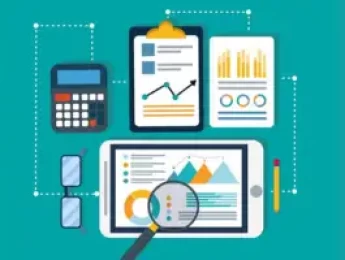Business analysis is a vital component for any organisation and is required for many activities such as Business Process Redesign and many improvement programmes. It comes into play in system development, reengineering, continuous process improvement and quality management. To work effectively as a business analyst, you must have analytical skills and understand how to model business processes. This knowledge needs to extend from the overview enterprise level down to a workflow level documented in detail.
The course will help delegates understand what is needed to map the business process models and break down the steps required to ensure that the business model accurately reflects the process. It will look at the stakeholders' requirements and the company's operational level. Good business analysts can improve the business's competitiveness, increase efficiency, and help reduce costs while increasing the satisfaction of employees and customers.
One critical skill is understanding the widely used Business Process Modelling Notation (BPMN) tool. It is business-friendly yet able to bring precision to any aspect of implementing and automating business processes. Once demonstrated, it is easy to work with and should be a role staple. The course will look at all best practices and show how business analysts can prepare and manage and successfully implement business process solutions.
Upon completion of this course, participants will be able to:
- Understand business processes
- Define business process components
- Use process improvement techniques to transform business processes
- Confident in applying process analysis concepts/techniques
- Define processes using Business Process Modelling Notation (BPMN)
- Develop business process architecture
- Analyse and process customer requirements
- Understand how to specify measures of business process performance
- Diagnose the health of a business process
- Understand the role of business analyst acts as an intermediary
- Demonstrate managing the interests/needs of business/project management and IT communities
- Understand/apply a systematic framework for conducting business analysis activities
- Show the phases of the business analysis life cycle
- Provide best practices and theory with practical tools and techniques
This course is intended for
- Business Managers
- Business/Business Process Analysts
- Process Owners
- Business and Systems Analysts
- Information Technology Professionals
- BPM Project Leaders
- BPM Project Team Members and Quality Specialists
- Project managers
- Functional Manager
- Developers and Testers
- Systems Analysts
Teaching takes place in a variety of settings, including face to face in a classroom environment. It will ensure that participants can expand their knowledge of the subject and increase their skill set. The course is delivered via various methods by a specialist tutor. This will include PowerPoint presentations, reviewing articles and other relevant materials, group or individual exercises and discussions. There may be some independent work set, and the course will require submitting articles to demonstrate understanding and an end-of-course test. Note-taking is encouraged, and you are welcome to use electronic devices to do this.
The course manual will form part of the learning but give you references for the future. You are encouraged to ask questions and, if needed, spend time one-on-one with your tutor to review any issues. You can network with peers in similar roles during your time in the classroom.
Day 5 of each course is reserved for a Q&A session, which may occur off-site. For 10-day courses, this also applies to day 10
Section 1: Business Analysis 101
- An Introduction to Business Processes
- Types of business processes
- Identifying and naming business processes
- Business analysis v project management
- Techniques of business analysis
- How to analyse the components of a business process?
- Where does business analysis information originate?
- Business analysis: A component of the project plan
- Project stakeholders: Identification, analysis and communication
- Determining activities, deliverables, resources and measures
- Define how to approve requirements and manage scope changes
- Track, assess, and report on work quality
Section 2: Setting Goals and Defining Purpose
- Setting clear, correct and consistent requirement
- Drawing information out of stakeholders
- Recording and confirming information provided by stakeholders
- Managing stakeholder consensus
- Manage objectives, requirements, deliverables, & components
- Manage post-implementation knowledge of requirements
- Ensure requirements are understood and usable, by stakeholders
- Managing productive workshops and making effective presentations
Section 3: Analysing Business Processes
- Identify and define why organisational change is required
- Identifying needs for new capabilities
- Defining solution scope and preparing the business case
- Business case justification: investment in delivering the proposed solution
- Prioritising/organising/specifying/modelling requirements
- Define assumptions/constraints
- Verifying and validating requirements
- Solution assessment
- Analytical thinking and problem solving
- Business knowledge
- Communication skills/conflict resolution skills
- Risk, responsibility, and skills analyses
Section 4: Using Business Process Modelling Notation (BPMN)
- Business Process Modelling Notation (BPMN)
- The Mechanics of Business Process Modelling
- Modelling business processes events
- Representing detailed branching and joining logic
- Business processes patterns
- Modelling processes using the essential BPMN elements
- Extended BPMN modelling elements
- Developing hierarchical diagrams
- Using pools and lanes
- Handling process exceptions
Section 5: Business Analysis in Project Management
- Identifying and analysing process customers and gaps
- Project scope, schedule and metrics
- Challenging legacy business decisions
- Diagnosing process health
- Process performance analysis
- Identifying process enablers/team development
- Business analysis in a project environment
- Planning and documenting
- Commitment to action
Upon successful completion of this training course, delegates will be awarded a Holistique Training Certificate of Completion. For those who attend and complete the online training course, a Holistique Training e-Certificate will be provided.
Holistique Training Certificates are accredited by the British Assessment Council (BAC) and The CPD Certification Service (CPD), and are certified under ISO 9001, ISO 21001, and ISO 29993 standards.
CPD credits for this course are granted by our Certificates and will be reflected on the Holistique Training Certificate of Completion. In accordance with the standards of The CPD Certification Service, one CPD credit is awarded per hour of course attendance. A maximum of 50 CPD credits can be claimed for any single course we currently offer.
- Course Code MG2-109
- Course Format Classroom, Online,
- Duration 5 days













